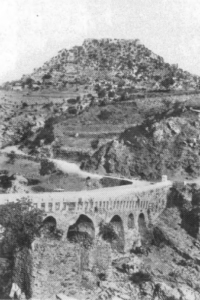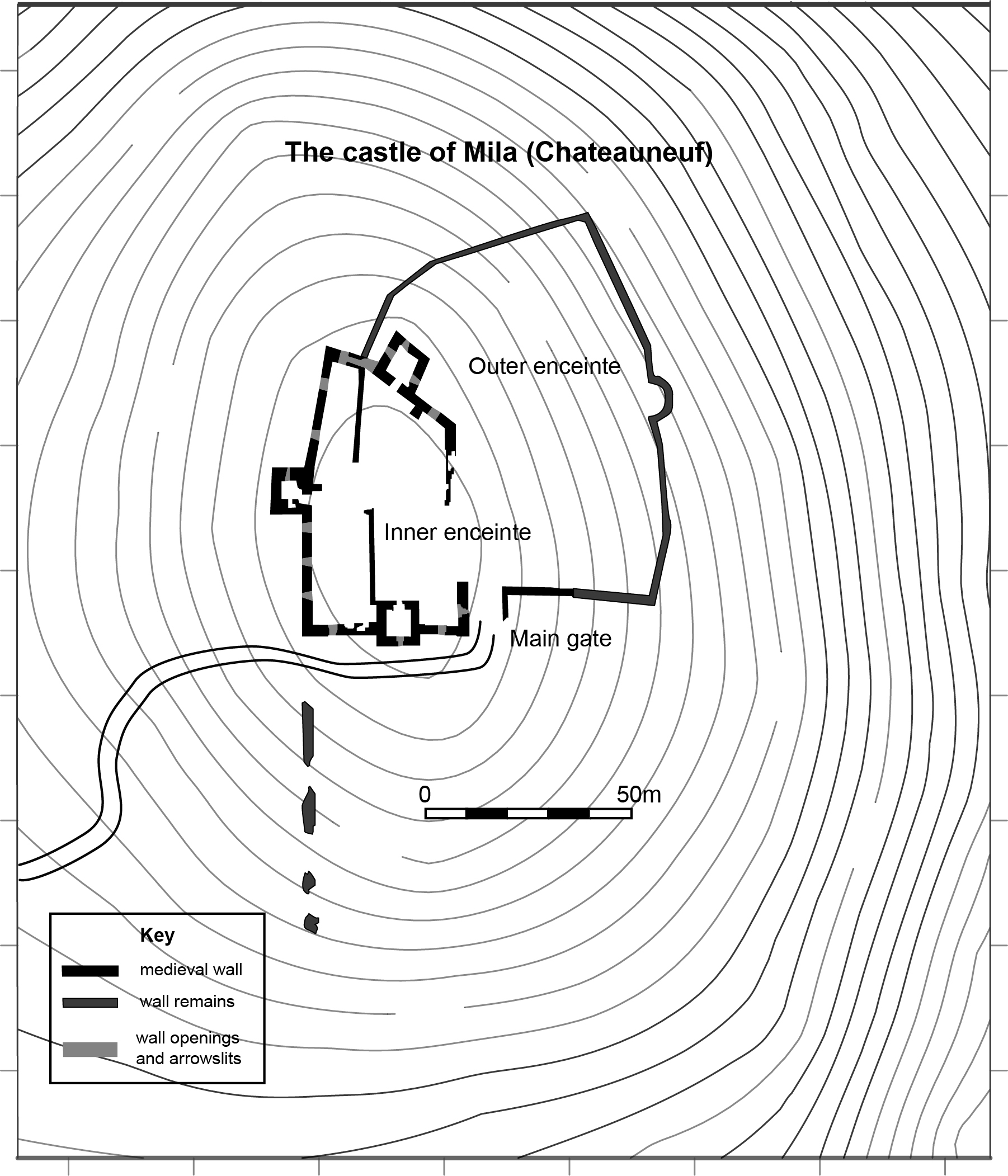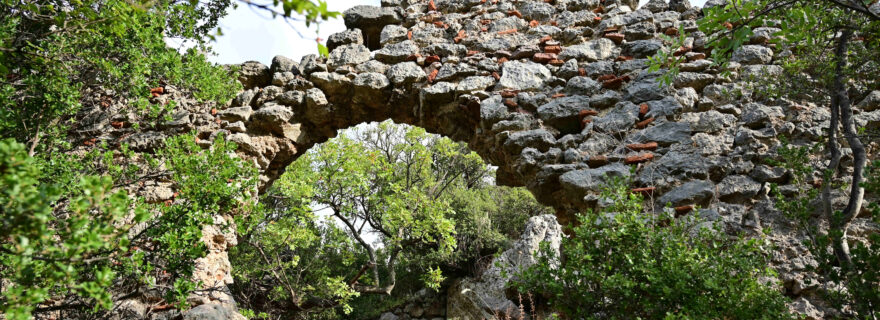Deciphering the Feudal Landscapes of Crusader Peloponnese
They have been described as castles, castle towns or simply fortified medieval villages. The hilltop settlements of the late-medieval Peloponnese dominate the landscape as relics of its feudal past. Yet, their identity, origin, purpose and chronology remain ambiguous.
It is the year 1204. In the wake of the fall of Constantinople to the Latins of the Fourth Crusade, a certain French knight, Geoffrey of Villehardouin, landed in the remote Peloponnesian town of Methone, seeking adventures and riches. Along with a small host of fellow Crusaders, he would soon embark on a journey of conquest and expansion which would, eventually, bring the whole of Peloponnese, called Morea in this period, in his grip.
He would eventually be known as one of the founding fathers of the southernmost Crusader state of mainland Greece: that of the Principality of Achaea. Henceforth, the Latins would establish themselves and rule on this parchment of land up until the early 15th c., when their turbulent and losing struggle against the resurgent Byzantines would lead to their final demise.
From a Byzantine province to a feudalized Crusader land
From the early beginning after their Peloponnesian conquest, the Latins made sure to take any measures necessary to successfully establish an enduring political entity: internal order was mainly maintained by cooperating with most of the local Greek elite, which preserved its wealth, lands and privileges.
Economic stability, if not growth, was ensured by the extensive reorganization and rationalization of local (primarily agricultural) production towards a feudal-centralist economic model, by the development and upkeep of a sophisticated network of roads and transportation nodes across the land (consisting of minor settlements, castles, towns and ports) and finally, by maintaining close trade ties with the Italian maritime republics. Lastly, military might, indispensable for the overall protection of Crusader interests in the Morea, was preserved firstly via a web of alliances and suzerainties with other neighbouring Latin states or European powers abroad (especially France) and secondly, through the upkeep of an elite, albeit small in size, army core of mounted knights and sergeants.


Nonetheless, these “pillars” of Latin power would crack and collapse without the firm ideological foundations of traditional French feudalism: all the land of the realm was distributed in the form of fiefs amongst the Crusader leaders, their kins and their vassals, all of which, in their turn swore oaths of fealty to the Prince, the greatest landholder of all. Apart from the Prince himself, the most powerful of the Crusader seigneurs were (at least) twelve semi-autonomous barons. These lords had the right to assert almost complete administrative, juridical and economic control over their respected territories and their vassals, composed of an unknown but certainly small number of lesser knights or sergeants and a vast majority of Greek, Eastern Christian, serfs. This overall centralized feudal pyramid system was strictly hierarchical and enabled the conquerors to successfully exploit most of the local rural economy and especially all aspects of agriculture and livestock farming (fig.1).
Even though Crusader power started to rapidly decline from the late 13th c. onwards, this feudal model did not only endure but was widely embraced by the resurgent Byzantine elite. We may not entirely know the extent and depth of this Byzantine “feudalism” as 1) most contemporary textual evidence (such as fiscal censuses) were lost during the turbulent events of the 14th and 15th centuries and 2) the Byzantine Peloponnesian Despotate was, at least nominally, a state with centrally appointed local castellans and governors (fig.2). Nonetheless, in practice most of rural Peloponnese was still controlled by a handful of great landholder families, such as the Asan, the Frankopoulos, the Bokchalis, the Eudaimonoioannes, the Kantakouzenos and, naturally, the ruling Palaeologos. This trend continued up until the conquest of Byzantine Morea by the Ottomans in 1460, when the Peloponnese was turned into an Ottoman sanjak (province) divided into numerous ziamets and timars (temporary land grants).


The rise of Moreote hilltop settlements
Since the initial Crusader conquest, the very practical means for the Latins to enforce and control their new feudal system were like in France and the Crusader Levant, the castles. Castles, either of complex layout or just a simple fortification, were the key political, administrative and military elements of each feudal dominion inside the Crusader-held Peloponnese. Additionally, through them, the newly-arrived elite could project its cultural power over the conquered native Greek population. More importantly, however, these structures were the essential keys of the centralized economic system utilized by the Franks, and probably this explains their enduring economic role for almost three centuries (13th-late 15th).
At the start, these forts acted as foci for their immediate hinterland by attracting a large portion of its rural population to settle around their walls (fig. 3). This soon resulted in the rise of a great number of nucleated settlements across the Peloponnesian landscape, usually located on higher, easier to defend ground (hilltops). Unfortunately, due to a lack of both excavation and textual evidence, we still are not able to entirely know if this re-distribution of rural population happened gradually and dynamically, or through a more systematic approach by the Latins.


What is evident, however, is the simultaneous decrease in the number of smaller domestic sites across the land, like villages or even isolated farmsteads. This trend was especially observed in many rural areas of the Peloponnese through the application of archaeological survey fieldwork (like the Nemea Valley Archaeological Project for example). This important change in the pattern of settlement distribution could only greatly benefit the feudal economic system, which was based on the complete control over the agrarian surplus by the Crusader landholders.
The control of many of these nucleated hilltop centres of Crusader power was, naturally, challenged by the rising Byzantines after 1262. Yet, we cannot be certain of their fate after they changed hands. There are some strong indications that several important Crusader lowland towns, like Lacedaemon, Veligosti and Nikli, were completely abandoned and had their population moved towards newly-founded Byzantine hilltop settlements: that of Lacedaemon was moved to Mystras, that of Veligosti to Leontari, while that of Nikli to the settlements of Mouchli and Tsipiana. Similarly, in the area of Upper Messenia, the hilltop settlement of Gardiki was probably populated by serfs originating from various nearby villages under Frankish control (fig.4). These serfs could have either moved to the steep site of Gardiki through personal motivation or through Byzantine intimidation (it is attested that the latter conducted raids in neighbouring Crusader-held areas). Alas, most Crusader hilltop settlements, even large ones such as Minthe and Santomeri, are almost completely absent from the textual evidence, thus leaving the modern scholar searching in the dark for possible answers.
What generally remains observable in the historical sources during the time of the Byzantine reconquest, is the apparent emergence of a large number of new hilltop settlements. Hilltop settlements like Mystras, Salmenikon, Longanikos, Kastritsi, Mouchli, Tsipiana, Gardiki, Tarsus and Polyfengos are attested as important strongholds in the sources from the late 13th and up until the late 15th c. and the arrival of the Ottomans (except Mystras, which survives until the early 19th c.). All these sites feature to some extent common characteristics, like similar layouts (buildings constructed along the hill contours), external (curtain walls or cliffs) and internal (citadels) fortifications, concern for access to water (cisterns and springs), access to nearby mainland routes etc. In comparison to earlier Crusader settlements, these sites offer an even more secure and supervised environment, necessary for a semi-feudal society like the late Byzantine was: the necessity for protecting the populace was now greater than ever, especially after the outbreak of the bubonic plague in 1347 and the constant warfare of the era.

Figure 4: The hilltop settlement of Gardiki in Arcadia. Picture taken by the author.
Epilogue
Even though the relevant textual evidence is scarce and archaeological research has still to reach adulthood, we can securely assume that the vast majority of the Moreote hilltop settlements were abandoned very soon after the Ottoman conquest, by the late 15th c., to the benefit of the lowlands, which were more open to economic development.. The new Ottoman socio-economic model, significantly different from the previous feudal one, was once again transforming the Peloponnesian landscape.
The proper study of the late-medieval hilltop settlements would gradually emerge in the early 20th c. by identifying and documenting a great number of sites, thus bringing the topic of late-medieval rural Archaeology to the spotlight. Nevertheless, and apart from all the progress which has been undoubtedly made to this day, the decoding of these puzzling medieval settlements and their obscure identities remains a desideratum. What remains rather observable, is their status as “cultural melting pots” of Western European feudalism and Byzantine orientalism.
Further reading:
Athanassopoulos, E. 2010, 'Landscape Archaeology and the Medieval Countryside: Settlement and Abandonment in the Nemea Region', International Journal of Historical Archaeology, vol. 14, No.2 Special Issue: The Abandoned Countryside: (Re)Settlement in the Archaeological Narrative of Post-Classical Greece, pp. 255-270.
Bon, A. 1969, La Morée franque. Recherches historiques, topographiques et archéologiques sur la Principauté d'Achaïe (1205-1430), Paris: Editions E. de Boccard.
Cooper, F. (ed.) 2002, Houses of the Morea: Vernacular Architecture of the Northwest Peloponnesos (1205-1955), melissa publishing house.
Gerstel, S. E. J. (ed.) 2013, Viewing the Morea: Land and People in the Late Medieval Peloponnese, Washington DC: Dumbarton Oaks Research Library and Collection.
Lock, P. & Sanders, G. D. R. (eds.) 1996, The Archaeology of Medieval Greece, Oxford: Oxbow Books.
Lock, P. 2014, The Franks in the Aegean, New York and London: Routledge, Taylor and Francis Group.
Nicolle, D. & Hook, A. 2013, Crusader Castles in Cyprus, Greece and the Aegean, 1191-1571, Oxford: Osprey Publishing Ltd.
Papagiannopoulos, K., Simoni, H., & Kontolaimos, P. (2021). Settlement Pattern and Land Use under the Frankish Feudal System in the Northwestern Peloponnese (Thirteenth–Mid-Fifteenth Centuries), Frankokratia, 2(2), 109-143. DOI: https://doi.org/10.1163/25895931-12340009
Vroom, J. 2011, 'The Morea and its Links with Southern Italy after 1204: Ceramics and Identity', Archaeologia Medievale, vol. XXXVIII, pp. 409-430.
Dionysis Kalantzis-Papadopoulos and Leiden Medievalists Blog, 2022. Unauthorised use and/or duplication of this material without express and written permission from this site’s author and/or owner is strictly prohibited. Excerpts and links may be used, provided that full and clear credit is given to Dionysis Kalantzis-Papadopoulos and Leiden Medievalists Blog with appropriate and specific direction to the original content.


